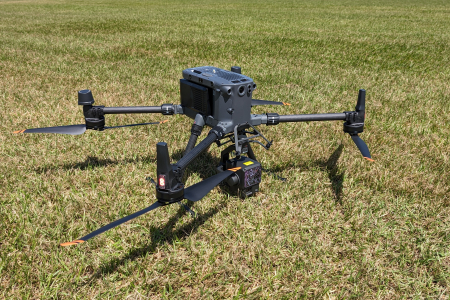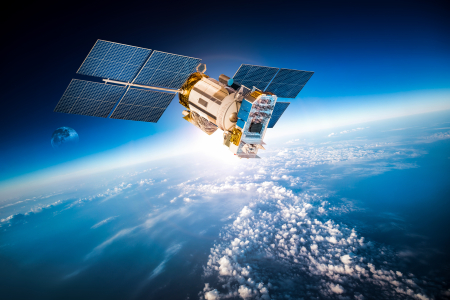This research group is focused on the application of Earth observation data and artificial intelligence (AI) for landscape-scale monitoring of tropical savannas, rangelands, and agriculture in northern Australia.
We develop new methods and improve existing methods of monitoring agricultural systems and natural resources in northern Australia. We use remotely sensed imagery to understand the climate and anthropogenic impacts on the environment and support pathways to environmental stewardship through robust remote sensing-based carbon accounting tools. Our research prioritises collaboration with First Nations communities and organisations through research, development, and adoption of projects.
We are a multicultural group of students and postdoctoral researchers with a broad range of backgrounds, interests, and skill sets. Our group includes First Nations and non-First Nations Australians as well as members from across the world.
Meet the team
Group leader
Research fellows
Glen Shennan (Spatial Analyst - Ecological Remote Sensing)
Dr Rafael Bohn Reckziegel (Research Fellow, Remote sensing riparian vegetation)
CDU affiliates
Prof Lindsay Hutley
Prof Brett Murphy
Prof Sarah Legge
Prof Stephen Xu
Dr Andrew Edwards
Dr Dylan Irvine
Honours
James Pike – Mapping groundwater-dependent vegetation using Landsat 8 and Random Forest
External collaborators
Dr Malcolm Lindsay (Environs Kimberley)
Dr Surantha Salgadoe (Wayamba University of Sri Lanka)
Former students
Michael Ogungbuyi (PhD, University of Tasmania) – Improving real-time pasture management using remote sensing, machine learning, and big data analytics
Cristina Rodriguez (master degree, CDU) – Detecting land clearing and regrowth in northern Australia using Sentinel-2
Jacques Theron (honours, Charles Sturt University) – Using Sentinel-1 synthetic aperture radar to characterize planophile and erectophile crop architecture and biomass
Sean Fisher (honours, Charles Sturt University) – Monitoring bushfires in Australia using NovaSAR-1 and Sentinel-1
Our research focus
- Carbon accounting
- Biodiversity and natural resource management
- Agricultural productivity
- Detection of invasive and rare native plants
- Groundwater-dependent vegetation
- Land condition assessment
- Field-based spectral measurements
Importance of this research
Monitoring tropical savanna and rangeland ecosystems at local and global scales is central to understanding the impacts of climate change and management practices but requires efficient tools and methods for improved success.
Our research provides and evaluates efficient tools and remote sensing methodologies that are scalable to support national and international programs related to carbon accounting, biodiversity assessment, and sustainable agriculture.
Key projects
Innovative biodiversity monitoring
This work measures the habitat condition of desert and savanna vegetation integration on ground biodiversity survey data, drone and satellite remote sensing.
We are monitoring vegetation structure and habitat condition using methods at different scales, establishing a relationship between on-ground biodiversity surveys (i.e., vegetation and trapping surveys), drone light detection and ranging (LiDAR) and photogrammetry, and various synthetic aperture radar data.
Sites occur in two habitats in the Kimberley region: the spinifex desert on Karajarri Country (Great Sandy Desert) and the savanna on the Dampier Peninsula on Yawuru Country. The project includes training Aboriginal Rangers in driving satellite remote sensing data. The project finishes in March 2026.
Mapping invasive plants
This research focuses on remote weed detection using AI and satellite and uncrewed aerial vehicle (UAV) imagery.
This is a collaborative project, including Charles Sturt University, exploring AI algorithms and drone and satellite imagery to detect and map hawkweed (Pilosella officinarum), bitou bush (Chrysanthemoides monilifera subsp. rotundata), and African lovegrass (Eragrostis curvula). The project finishes in June 2024.
Potential PhD projects
- Biomass and carbon modelling
- Habitat condition assessment
- Synthetic aperture radar and fire regimes
- Detecting weeds of national significance
- Modelling crop and pasture yields
Example publications
Shennan, G., Crabbe, R., 2024. A Review of Spaceborne Synthetic Aperture Radar for Invasive Alien Plant Research. Remote Sensing Applications: Society and Environment 101358. https://doi.org/10.1016/j.rsase.2024.101358
Crabbe, R.A., Lamb, D.W., Edwards, C., 2021. Investigating the potential of Sentinel-1 to detect varying spatial heterogeneity in pasture cover in grasslands. International Journal of Remote Sensing 42, 274–285. https://doi.org/10.1080/01431161.2020.1812129
Crabbe, R.A., Lamb, D., Edwards, C., 2020. Discrimination of species composition types of a grazed pasture landscape using Sentinel-1 and Sentinel-2 data. International Journal of Applied Earth Observation and Geoinformation 84, 101978. https://doi.org/10.1016/j.jag.2019.101978
Crabbe, R.A., Janouš, D., Dařenová, E., Pavelka, M., 2019. Exploring the potential of LANDSAT-8 for estimation of forest soil CO2 efflux. International Journal of Applied Earth Observation and Geoinformation 77, 42–52. https://doi.org/10.1016/j.jag.2018.12.007
Resources
Ground Control for Satellite Remote Sensing (PDF, 694.93 KB) by Glen Shennan, January 2025.


